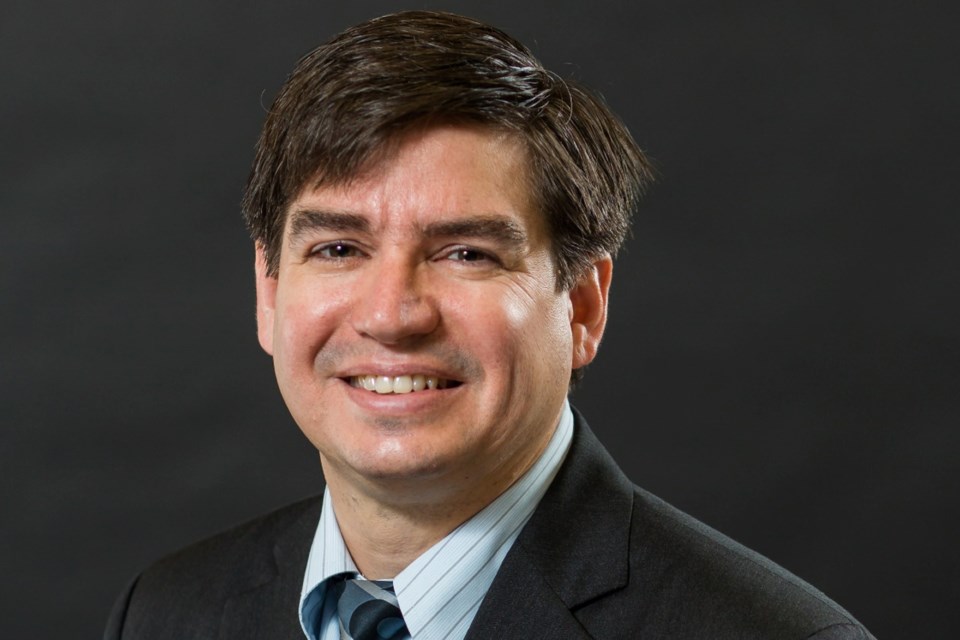Though he’s not really sure why the province is focusing on banning international students from medical school, given their small number, the incoming dean of Northern Ontario’s medical school does have some advice on increasing the supply of family docs.
Dr. Michael Green took the helm of NOSM University Nov. 1, where he became the vice-chancellor, dean and CEO, succeeding Dr. Sarita Verma, who is retiring after five years in the position.
Green is the outgoing president of the College of Family Physicians of Canada and comes to the Northern Ontario School of Medicine from Kingston, where he was the chair of Family Medicine at Queen’s University.
He was made available to reporters Friday in a virtual scrum marking his first day on the job at NOSM University.
Sudbury.com asked Green what his advice would be for Ontario Premier Doug Ford to increase the number of family doctors in Ontario.
He said he is very happy about the current expansion of medical training in Ontario, with the opening of two new medical schools in Ontario (at York University and Toronto Metropolitan University) and more medical school seats at existing schools.
NOSM University is expanding to 108 seats in its medical school program, a full doubling of the seats in its 2005 charter class, as well as growing its post-graduate program.
Overseeing this expansion is Green’s priority in his new role, as well as developing a new strategic plan for NOSM University.
But “announcing the numbers is one thing,” said Green, adding that there needs to be government funding to put in place the community supports to train all these new doctors as they go out into hospitals and doctors offices to do their clinical placements.
“I would love to see support for the creation of community-based teaching units, what we call clinical teaching units,” he said, giving “support for us to be able to allow our community teachers to have more students in the community and deliver care.”
Since its creation almost two decades ago, Northern Ontario’s medical school has been all about community-based training for doctors.
But such training isn’t free, Green said, giving the example of a family doctor who may need extra clinical space to accommodate students.
He said family doctors need “support for their practice,” because even once docs are trained, they won’t stay “if their working conditions are no good.”
Green also recommends “fair compensation” for physicians, “but the OMA (Ontario Medical Association) has to sort that out with the province.”
Further expansion of NOSM University beyond current targets would be dependent on all of the above factors, he said,
We also asked Green about the recent high-profile announcements surrounding medical schools made by the Ontario government.
That includes banning international students in medical schools beginning in the fall of 2026 and covering tuition for more than 1,000 students who commit to becoming a family doctor in Ontario.
Asked why he thinks the province is focusing on banning international students from Ontario medical schools, though there’s only a small number of them, Green said “I don’t really know what that’s about.”
NOSM University doesn’t have any international students, as applicants must be either Canadian citizens or permanent residents. In fact 91 per cent of the school’s students are from Northern Ontario.
“NOSM doesn’t have any international students, and there’s only 11 in all of Ontario,” said Green.
“Three of the schools have them. My understanding is these are what we call supernumerary positions, which are that they don't take seats away from Ontarians, but they're extra on top of what the medical school would normally offer.
“But we (NOSM University) don't have them. We focus all of our energies on training Canadian citizens and permanent residents for practice in the north.”
Green said he is glad to see the expansion of the “Stay and Learn” program that covers tuition and other educational costs to include students who commit to becoming family doctors in Ontario.
He said medical students are graduating with debt of up to $200,000 each. “So if you can take that pressure off of them, it’s just one more thing that makes it easier to say yes to family medicine,” Green said.
In its two decades, NOSM University has seen some success in easing the doctor shortage in Northern Ontario.
If students do both their medical school and residency training in Northern Ontario, 90 per cent stay in the region. Overall “it’s a bit less, but it’s still more than half that stay in the long term,” Green said.
Although he’s coming to NOSM University via Kingston, Green is no stranger to Northern Ontario, having practised in Moose Factory on the James Bay coast from 1995 to 2003, as a young doctor.
He said he’s already secured a place to live in Thunder Bay, where one of NOSM University’s campuses is located, and is looking for another in Sudbury. He will travel back and forth between the two northern cities.
Green said his previous experience in Northern Ontario will be tremendously helpful, as he’s already built relationships with other medical professionals in the area.
“Many of the doctors that I worked with during those years have, like me, gotten older and moved into other positions, and they're all over Northern Ontario now,” he said. “So I'm really looking forward to reconnecting with them.”
-With files from Canadian Press
Heidi Ulrichsen is Sudbury.com’s assistant editor. She also covers education and the arts scene.
